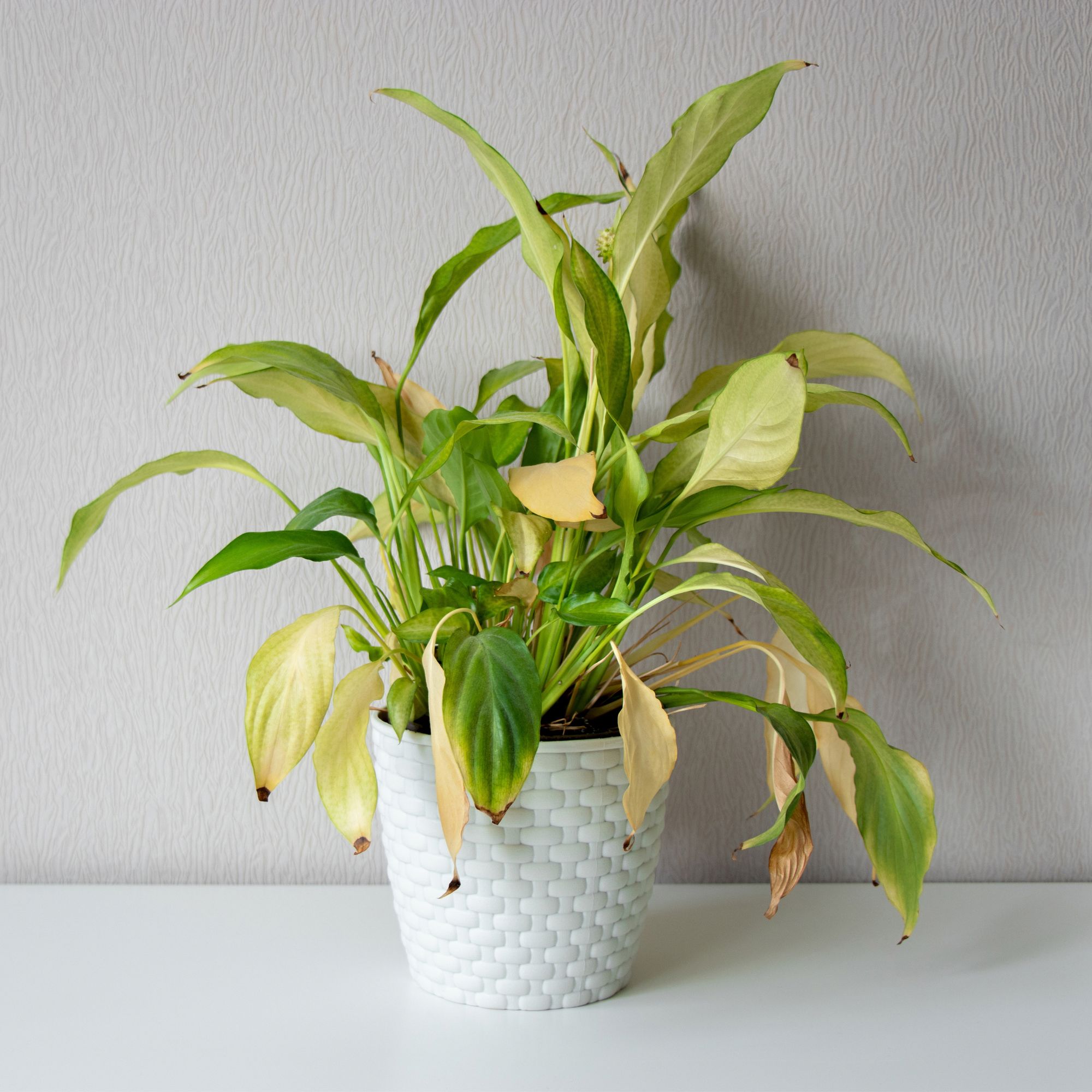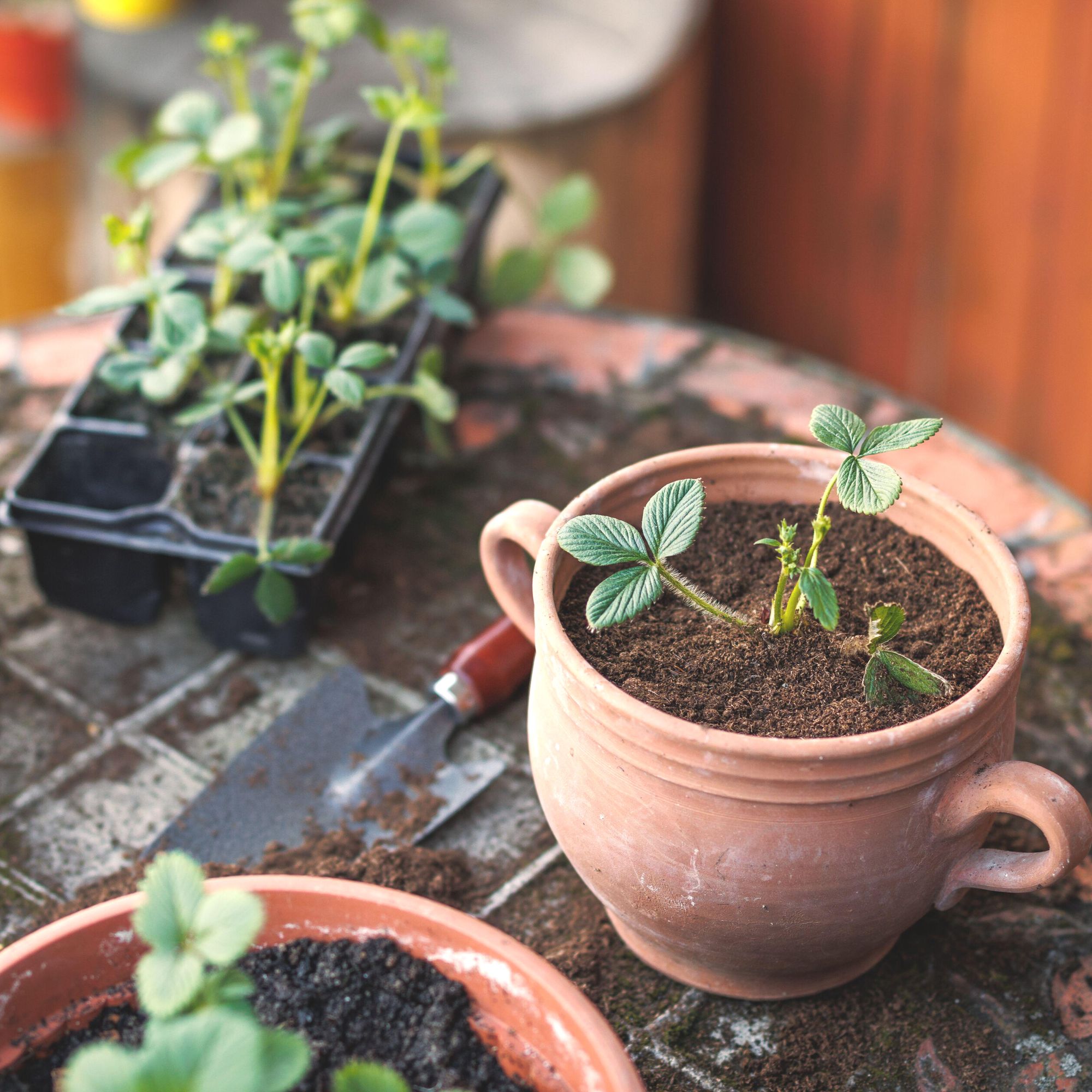How to save an overwatered plant, without calling a gardener
Yes, it really is possible to give your plants too much to drink. Here's how to save an overwatered plant (and spot the signs of overwatering, too)


How to save an overwatered plant, is a crucial skill every good plant parent should know. When figuring out how to plan a garden, it always feels as if there are a million things to consider: the hottest new garden trends, for example, and current garden landscaping costs.
However, one of the most important garden mistakes to avoid is overwatering. That's right, everyone: it seems you really can have too much of a good thing, as our plants are just as unhappy being overwatered as they are underwatered.
So, how to fix overwatered plants?
The signs and symptoms of an overwatered plant
There are a few tell tale signs that you have an overwatered plant, according to Nick Wood, gardening expert at GardeningExpress.co.uk.
'One of the major signs is when both old and new leaves begin to drop off of the plant,' he says.
'You may also notice that the leaves look a little brown or yellow, too.'
Nick adds: 'Overwatered plants will often have an unstable and soft base and maybe even some fungus on top of the soil.'
Sign up to our newsletter for style inspiration, real homes, project and garden advice and shopping know-how

Michael at Patch Plants, meanwhile, breaks down the signs and symptoms of an overwatered plant as follows:
- Yellowing and wilting leaves (marks within the leaf may have a yellow halo around a darker section)
- Mushy or rotting roots
- Mould or fungus growth around the surface of the soil
- Foul odour coming from the soil
- Saturated soil (this is when all of the voids, spaces, and cracks are filled with water)
How to fix overwatered plants

According to the clever people at green rooms, there are a few simple steps you can take to rescue the plant and stop it becoming one of your new water feature ideas...
- Remove the plant from its pot and remove the sodden soil
- Cut off any black or mushy roots (remember: healthy roots will be firm and pale in colour)
- Repot the plant with new soil, such as ninja soil potting mix, that has a chunky mix containing some perlite or orchid bark, in a container with a drainage hole
- Water again in a few days if the top couple of inches of soil are dry – stick your finger in to find out!

Nick adds: 'First you’ll want to move the plant into some shade and avoid watering it further until the soil has completely dried. Gently tap the sides of the plant pot to get the soil moving and create air pockets for the roots to dry.
'You can also lift the plant out of the pot and leave it to dry like this for a few hours. While it’s out of the pot, trim any rotten roots.
'If the soil is too wet and looks like it won’t dry in a few hours then it’s best to repot the plant in some fresh soil.'
How to avoid an overwatered plant in the future
'All plants are different and will require different levels of watering but a general rule of thumb is to only water your plants when the top two inches of the soil are dry,' advises Nick.
'This way, you’re giving the plant enough time to soak up the water. '
Michael, meanwhile, offers up the following rules when it comes to watering you plants:
- Consider the plant's location, humidity levels, and season when determining watering frequency
- Check the moisture level of the soil using your finger or a moisture meter before watering, remembering each plant has specific needs
- Use pots with drainage holes (outdoors) to prevent water from accumulating at the bottom

- Remove excess water if it is in a nursery pot, no longer than 1 hour after watering.
- Add a base layer of drainage if the plant is planted straight into the decorative pot. Research the specific drainage requirements for the plant
- Establish an observation schedule and stick to it, adjusting the watering as needed based on plant needs and environmental conditions
Remember, the most common cause of premature plant death is over-watering.
'In other words, too much love,' adds the team at green rooms, noting that 'it’s always better to think ‘less is more’ when it comes to the frequency that you water your plants.
'It is much easier to rescue a plant from underwatering than over-watering.'
Lesson learned, eh?
Can an overwatered plant be saved?
'If your plant hasn’t begun to wilt then you probably have a good chance of being able to undo the damage caused by overwatering,' advises Nick. 'However, this will depend on how much it was overwatered in the first place.'
Stop watering your plant immediately, allow the soil to dry out, and trim away and dead or rotting foliage. Consider repotting in a sterilised pot, too, to avoid root contamination.
And remember: 'It's important to choose pots carefully and ensure they have good drainage.'
Nick finishes: 'You can also add a layer of gravel at the bottom of your pot to further improve the drainage.'
How do I know if my plant is overwatered?
When it comes to diagnosing an overwatered plant, there are a few symptoms to watch out for, the first of which is dropping and yellowing leaves (both old and new). You also need to watch out for saturated soil, an unstable and soft base, and maybe even some fungus on top of the soil. There will also sometimes be a bad smell coming from the plant itself, which is a sign your plant has rotting roots.

Kayleigh Dray became Ideal Home’s Acting Content Editor in the spring of 2023, and is very excited to get to work. She joins the team after a decade-long career working as a journalist and editor across a number of leading lifestyle brands, both in-house and as a freelancer.